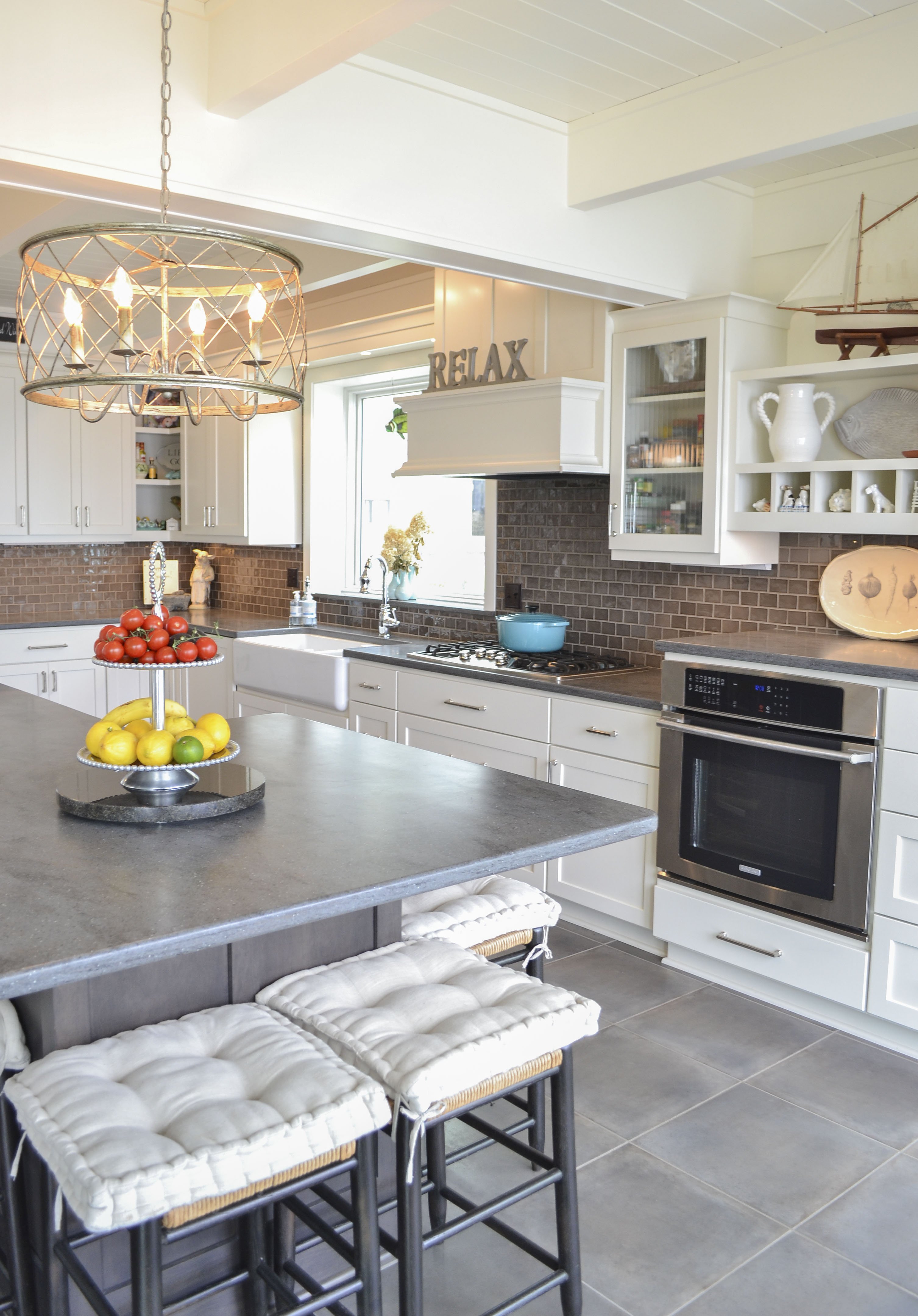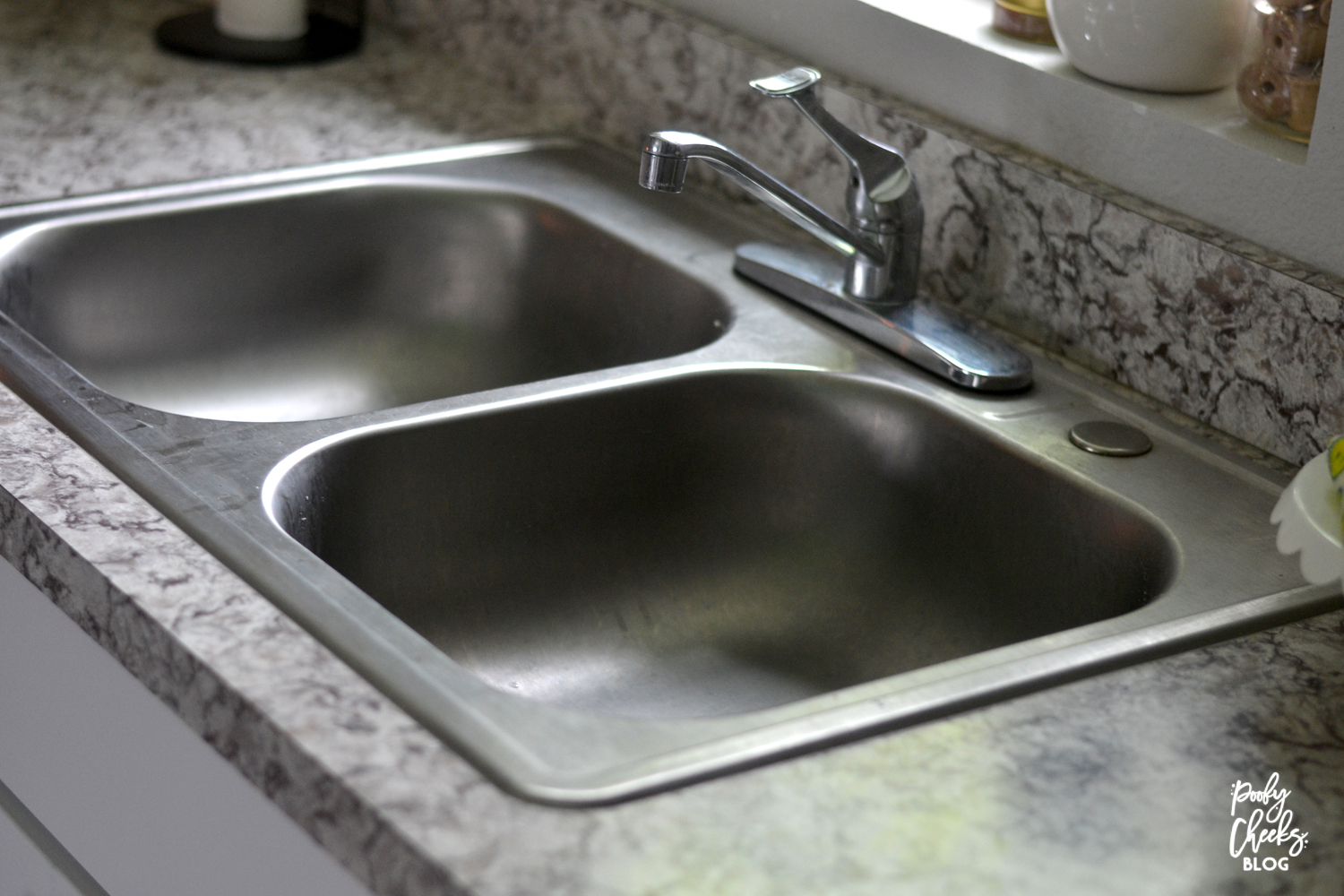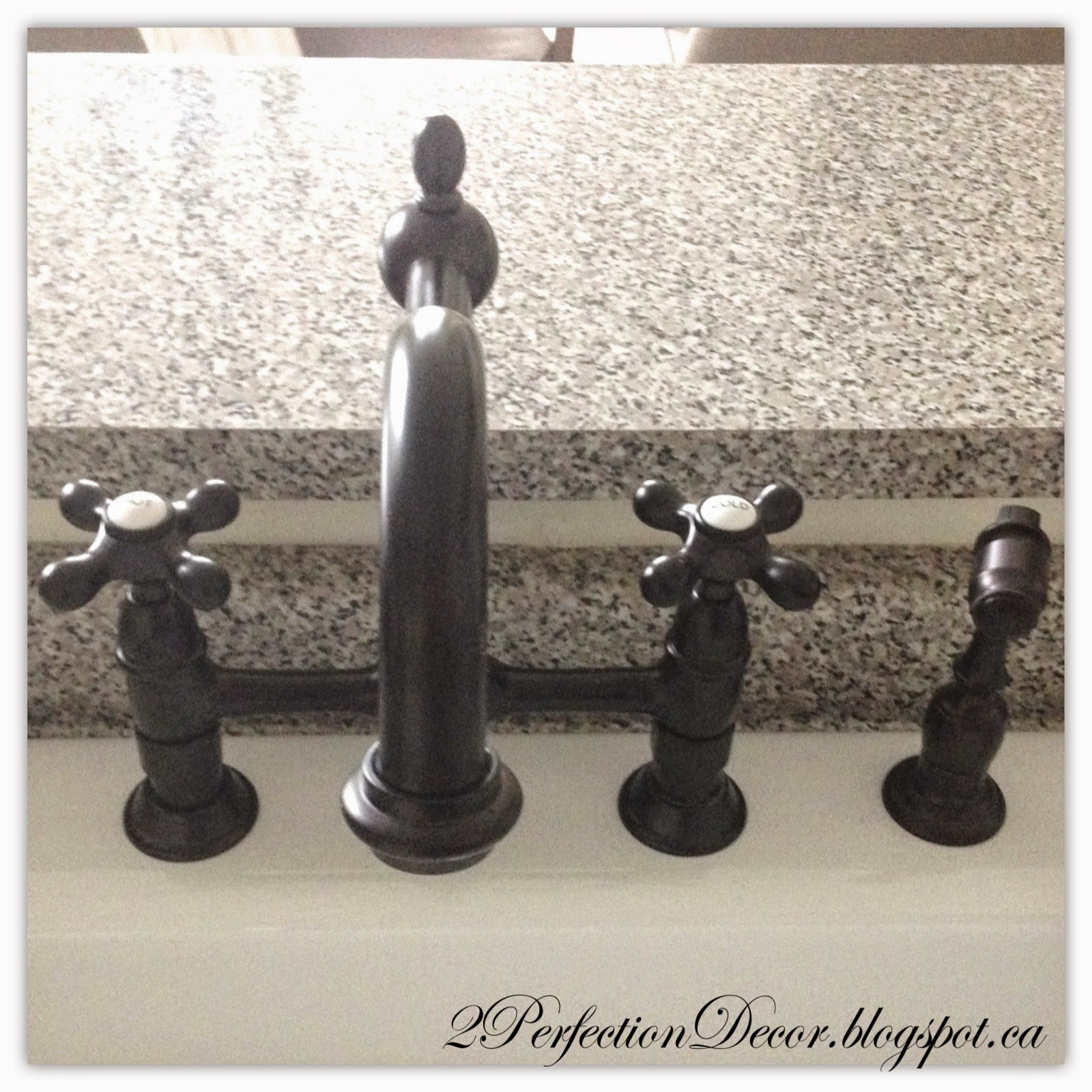Choosing a kitchen farmhouse sink faucet is one of the most important decisions when designing or renovating a kitchen, particularly if you’re going for a rustic or country-inspired aesthetic. I’ve always loved the charm of farmhouse sinks, and the faucet plays a crucial role in completing that look. Beyond just being functional, a well-chosen faucet adds character and style, often becoming a focal point in the kitchen. But there’s a lot to think about before settling on the perfect faucet, from the size and type to the finish and functionality. Each decision can have a big impact on how the space looks and operates.
One of the first things to consider is the compatibility between the farmhouse sink and the faucet. Farmhouse sinks are typically larger and deeper than standard kitchen sinks, and this impacts the type of faucet that will work best. I’ve found that when choosing a faucet for a farmhouse sink, it’s essential to select a model with a higher arc or spout to ensure that you have enough clearance. The deep basin of the farmhouse sink often requires more room for washing large pots, pans, or even small pets, so the faucet needs to accommodate those needs.

Another factor is the style of the faucet. While farmhouse sinks are rooted in traditional design, the faucet can either complement that rustic look or add a modern twist, depending on the style you choose. If you’re aiming for a classic farmhouse kitchen, a bridge faucet with two separate handles for hot and cold water can add a vintage charm. On the other hand, if you prefer a more modern take on the farmhouse aesthetic, a sleek, single-handle faucet with clean lines can create a striking contrast. I lean towards bridge faucets for a farmhouse sink because they emphasize that traditional look, which feels warm and inviting.
Material and finish are also key aspects to think about. Brass, copper, and bronze finishes work beautifully with a farmhouse sink, adding a rustic, old-world feel. For those who prefer a more contemporary touch, stainless steel or brushed nickel offers a more streamlined, industrial look that can still complement the farmhouse vibe. I’ve found that copper faucets, while stunning, tend to develop a natural patina over time, which can either add to the charm or become a maintenance issue, depending on your preference. Stainless steel, on the other hand, is much easier to maintain and looks great with both modern and traditional kitchens.

Functionality is another critical consideration. Many farmhouse faucets come with additional features that can make kitchen tasks easier and more efficient. Pull-down or pull-out spray heads, for instance, are incredibly practical, allowing you to direct the water exactly where you need it, which is particularly useful in the large basin of a farmhouse sink. I’ve found that a faucet with a flexible hose or a pull-down spray is essential for rinsing down the entire sink, especially when washing large items or cleaning up after a big meal.
Water flow rate is another thing to keep in mind. Farmhouse faucets often have a higher flow rate compared to standard kitchen faucets, which can be a benefit when filling large pots or washing bulky items. However, it’s important to balance that with water conservation efforts. Many modern faucets now come with aerators that maintain strong water pressure while reducing overall water usage. I’ve personally opted for a faucet with a built-in aerator, which helps me strike that balance between functionality and eco-friendliness.

Installation options for farmhouse faucets are also varied. Some people prefer deck-mounted faucets, where the faucet is installed directly on the sink or countertop. Others go for wall-mounted faucets, which can free up countertop space and add a unique visual element. Wall-mounted faucets, in particular, are great for creating a more minimalist look, which can be appealing if you want to keep the focus on the farmhouse sink itself. However, these faucets require more precise installation, as the plumbing needs to be routed through the wall, so it’s something to plan for early on in the renovation process.
Temperature control is another feature to think about, especially if you’re opting for a bridge faucet with separate hot and cold handles. While they look great, bridge faucets can sometimes make it more challenging to achieve the perfect water temperature quickly. Single-handle faucets, by contrast, offer more precise and convenient control over temperature, which can be especially handy when multitasking in the kitchen. For me, the decision often comes down to style versus convenience, with bridge faucets winning out for their aesthetic appeal, even if they require a bit more finesse when adjusting the water temperature.
One feature I’ve come to appreciate in farmhouse sink faucets is the inclusion of a pot filler or side sprayer. A pot filler mounted above the stove can make filling large pots more convenient, while a side sprayer can help with rinsing off vegetables or cleaning the sink. Both features are often seen in more traditional kitchens but can be seamlessly integrated into a modern farmhouse design. Having these additional features not only makes cooking more efficient but also adds a touch of luxury to the kitchen.

Another thing to consider is the height and reach of the faucet. Since farmhouse sinks are typically wider than standard sinks, you’ll need a faucet with enough reach to cover the entire basin. A faucet with a short spout might look out of proportion with a large farmhouse sink and may not provide adequate coverage. I always make sure to measure the sink dimensions and choose a faucet that can reach all areas of the basin without splashing water outside of the sink.
In terms of maintenance, it’s important to choose a finish that won’t show water spots or fingerprints too easily, especially if you live in an area with hard water. Finishes like brushed nickel and stainless steel tend to be more forgiving in this regard, while polished chrome or brass can require more frequent cleaning to maintain their shine. I find that stainless steel is the best option for a low-maintenance kitchen faucet, especially in a busy household where the faucet gets heavy use.
Durability is also a significant consideration when choosing a farmhouse sink faucet. Because this faucet will likely be used frequently, especially in a family kitchen, it’s worth investing in a high-quality model that can withstand daily wear and tear. I always look for faucets with solid brass construction or ceramic disc valves, as these materials are known for their longevity and reliability. Cheaper faucets may look good initially, but they can wear out quickly, leading to leaks or other issues down the line.

For those who are looking to create a cohesive kitchen design, it’s important to match the faucet with other hardware in the kitchen, such as cabinet pulls, drawer handles, and light fixtures. This creates a unified look and makes the kitchen feel more polished and intentional. I’ve found that choosing complementary finishes across these elements can tie the whole room together, whether you’re going for a modern farmhouse look or something more traditional.
Another consideration is whether you want a touchless or manual faucet. Touchless faucets are becoming increasingly popular in kitchens because they offer convenience and hygiene benefits. A simple wave of your hand can turn the water on or off, which can be a lifesaver when your hands are dirty from cooking. While I appreciate the convenience of a touchless faucet, I’ve noticed that it tends to feel more modern and may not align as well with a traditional farmhouse aesthetic.
Finally, cost is always a factor when selecting a faucet for a farmhouse sink. Farmhouse faucets come in a wide range of prices, and it’s important to find one that fits within your budget while still offering the features and style you need. I’ve learned that while it’s tempting to go for the most affordable option, investing in a high-quality faucet can pay off in the long run, as cheaper faucets are more likely to need repairs or replacement sooner.

Common Mistakes to Avoid:
One of the most common mistakes people make when selecting a farmhouse sink faucet is choosing one that isn’t proportional to the size of the sink. A small or short faucet may not provide adequate coverage, leading to water splashing outside the sink. Always measure the dimensions of your farmhouse sink to ensure that the faucet has enough reach and height to cover the entire basin.
Another mistake is selecting a faucet that doesn’t complement the style of the kitchen. While farmhouse sinks have a traditional feel, the faucet style can make or break the look. Opting for a modern, sleek faucet in a highly traditional farmhouse kitchen can create a visual disconnect. It’s essential to choose a faucet that aligns with the overall design theme of the kitchen.
Improper installation is also a common pitfall. Whether you’re opting for a deck-mounted or wall-mounted faucet, installation needs to be precise to avoid leaks and ensure proper water flow. Hiring a professional to install the faucet is always a good idea, especially if the installation involves rerouting plumbing or adding new features like a pot filler.

Failing to consider the water flow rate is another oversight. Farmhouse faucets often have higher flow rates to accommodate the large basin of the sink, but this can lead to higher water usage. Installing an aerator or choosing a faucet with water-saving features can help mitigate excessive water consumption while still providing strong water pressure.
Neglecting to match the faucet finish with other hardware in the kitchen can lead to a disjointed look. Choosing a faucet finish that complements cabinet hardware, light fixtures, and appliances helps create a cohesive design. This attention to detail makes the kitchen feel more intentional and polished.
Last, opting for a cheap faucet to save money can lead to problems down the road. Low-quality faucets are more prone to leaks, corrosion, and malfunctioning parts. It’s worth investing in a durable, high-quality faucet that will last for years without requiring frequent repairs or replacement.

What is the best type of faucet for a farmhouse sink?
The best type of faucet for a farmhouse sink is one that complements the style and size of the sink. High-arc or gooseneck faucets work well with deep farmhouse sinks, as they provide ample clearance for washing large pots and pans. Bridge faucets are a popular choice for a traditional farmhouse look, while single-handle or pull-down faucets can offer a more modern twist on the style.
Can I install a wall-mounted faucet with a farmhouse sink?
Yes, wall-mounted faucets can be installed with farmhouse sinks, and they can create a unique, minimalist aesthetic. Wall-mounted faucets free up countertop space and can be easier to clean around, but they require precise installation since the plumbing needs to be routed through the wall. It’s important to plan for this type of installation early in the renovation process.
What finish is best for farmhouse sink faucets?
The best finish for a farmhouse sink faucet depends on the overall style of your kitchen. For a traditional look, finishes like brushed nickel, brass, or copper add a warm, rustic feel. Stainless steel and polished chrome offer a more modern, sleek aesthetic. I recommend considering both durability and ease of maintenance when choosing a finish, as some options, like copper, require more upkeep to maintain their appearance.

Are touchless faucets a good option for a farmhouse sink?
Touchless faucets can be a good option if you’re looking for convenience and hygiene benefits, especially in a busy kitchen. However, touchless faucets tend to have a more modern appearance, which may not align with the traditional look of a farmhouse sink. If you prefer a more classic aesthetic, a manual faucet with a pull-down spray might be a better choice.
How do I prevent water spots on my farmhouse faucet?
Water spots can be minimized by choosing a faucet finish that is resistant to spotting, such as brushed nickel or stainless steel. Regularly wiping down the faucet with a soft cloth after use can also help prevent water spots from forming. Additionally, using a water softener can reduce the minerals in your water that cause spotting, especially if you live in an area with hard water.
What features should I look for in a farmhouse sink faucet?
Key features to look for in a farmhouse sink faucet include a high arc or gooseneck spout for clearance, a pull-down or pull-out spray for flexibility, and durable materials like brass or stainless steel for longevity. If you frequently cook large meals, consider adding a pot filler or side sprayer for added convenience. It’s also worth looking for a faucet with water-saving features like an aerator to help conserve water without sacrificing performance.

Superb Drop-in Kitchen Farmhouse Sink Ideas Farmhouse sink kitchen

2Perfection Decor: New Farmhouse Kitchen Sink & Faucet

Related Posts:
- What Is A Good Flow Rate For A Kitchen Faucet
- Clean Kitchen Faucet Sprayer
- Mgs Kitchen Faucets
- Moen Kitchen Faucet Parts List
- Wall Mount Kitchen Faucet
- Kitchen Sink Faucet With Soap Dispenser
- Moen Bayhill Single Handle High Arc Pulldown Kitchen Faucet
- Fontaine Bellver Traditional Single Handle Brushed Nickel Kitchen Faucet
- Best Commercial Kitchen Faucet
- How To Fix Moen Single Handle Kitchen Faucet